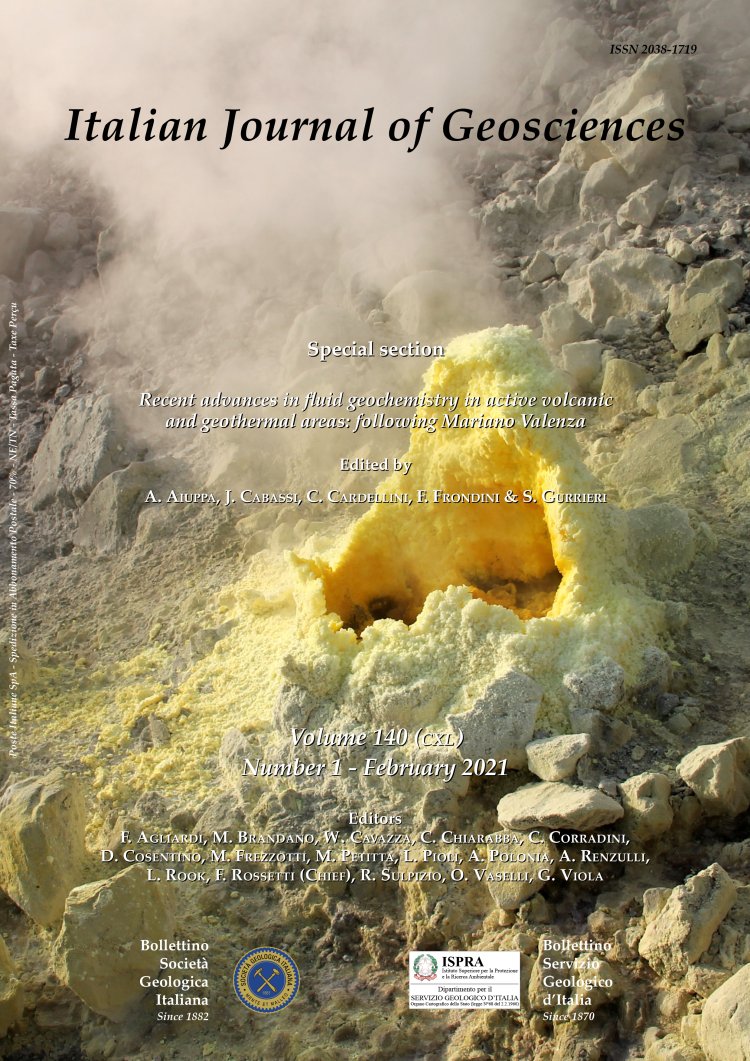
Geochemical characterisation of the alkaline and hyperalkaline groundwater in the Othrys Ophiolite Massif, central Greece
Lorenza Li Vigni (1), Kyriaki DaskaLopoulou (2), Sergio Calabrese (1,3), Francesco Parello (1) & Walter D’Alessandro (3)
(1) Università degli Studi di Palermo, Dipartimento Scienze della Terra e del Mare, via Archirafi, 36, 90123, Palermo, Italy.
(2) GFZ German Research Centre for Geosciences, Physics of Earthquakes and Volcanoes, Helmholtzstraße 6/7, 14467 Potsdam, Germany.
(3) Istituto Nazionale di Geofisica e Vulcanologia, via Ugo la Malfa 153, 90146, Palermo, Italy.
Corresponding author e-mail: walter.dalessandro@ingv.it
Volume: 140 (2021) f.1
Pages: 42-56
Abstract
The complex geology of Greece includes two important parallel running ophiolitic belts. The Othrys Massif in central Greece belongs to the westernmost of them. In the current study, 33 water samples from cold hyperalkaline and hypothermal (T < 40°C) alkaline springs and 30 gas samples (either dissolved or free) were collected at 17 different sites in and around this wide ophiolite outcrop, aiming to determine the origin of fluids and evidence gas-water-rock interaction processes taking place in the area. Water samples were analysed for their chemical (major ions and trace elements) and isotope (δ18O-H2O, δ2H-H2O) composition. They can be subdivided into alkaline (pH <11) of both Mg-Ca-HCO3 and Na-HCO3 composition and hyperalkaline (pH > 11 and Ca-OH composition). Trace elements generally showed very low concentrations and mostly inversely correlated with pH. Gases were analysed for their chemical (He, Ne, Ar, H2, O2, N2, CH4, C2H6, CO2 and H2S) and isotope (δ13C-CH4, δ2H-CH4, δ13C-CO2) composition. Samples from alkaline waters were mainly dominated by CH4 (from 128,000 to 915,000 μmol/mol), while hyperalkaline waters showed a N2-rich composition (from 727,000 to 977,000 μmol/mol). Methane had a wide range of isotope compositions (δ13C-CH4 from -74.5 to -14.5 ‰ and δ2H-CH4 from -343 to -62 ‰). Alkaline waters present the most negative isotope values for CH4, evidencing a biogenic (both thermogenic and microbial) origin. Many of the hyperalkaline waters had CH4 isotope values compatible with an abiogenic origin through serpentinization processes but occasionaly very negative values were recorded, indicating sometimes a clear biogenic contribution. Finally, few samples both from alkaline and hyperalkaline waters showed some evidence of secondary oxidation processes.
Keywords
Get Full Text